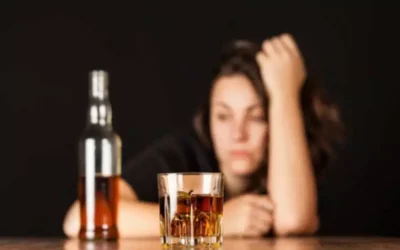Facts About Aging and Alcohol National Institute on Aging
Content
(A drink is one 12-ounce can or bottle of beer, one 5-ounce glass of wine, or one 1.5-ounce shot of an 80-proof or less liquor.) Talk with your doctor to find out what’s right for you. Understanding these “standard” drink sizes can make it easier to follow health guidelines. Another thing to keep in mind is that drinks may be stronger than you think they are if the actual serving sizes are larger than the standard sizes. In addition, drinks within the same beverage category, such as beer, can contain different percentages of alcohol. It’s important to read the label to understand and be aware of how much you’re actually drinking.

However, drinking excessive amounts on a regular basis puts you at risk of developing alcohol use disorder (AUD), also known as alcohol dependence, alcoholism, and alcohol abuse. The Dietary Guidelines for Americans define excessive drinking as more than two a day for men and https://ecosoberhouse.com/ more than one a day for women. While it might not much attention, alcohol and aging is a real thing. Over time, heavy alcohol use can result in changes to the skin. This is because of the damage that alcohol can do to the body’s organs as well as chemicals in the body.
FAQs About How Alcohol Affects Appearance
Attempting to self-detox can end up causing even more harm and can even be life-threatening. Excessive alcohol use can have other visual and non-visual adverse effects on the body that can cause premature aging. One global study found that no amount of alcohol is completely safe and that alcohol was the biggest risk factor for disease worldwide. Another more recent study found that any amount of alcohol causes harm to the brain. The idea of having a drink to relax before bedtime may not be a good one, especially as you get older. Instead of lulling you into a restful night, alcohol can actually keep you from getting to sleep and lead to restless slumber.
Of course, most people don’t want to look 10 years older, but the fact is alcohol makes you look much older than you really are. Alcohol has several effects on the body, most of which are not pleasant. This leads to swelling, flushing, and broken capillaries that make you look older. At first, the staff had thought he was suffering a heart attack, but a CT scan found that part of his small intestine had been perforated. A surgical team repaired the hole, saving his life, but the surgeon had some questions.
Calories In Alcohol
It’s common knowledge that drinking too much can lead to alcoholism. But now you know that it can also be a reason you look and feel much older than you really are. When you lack vitamin D, it affects the body’s ability to absorb calcium. In turn, you’ll have bone loss, lower bone mass, and reduced bone density.
Because bingeing and excess drinking cause nutritional deficiencies, this can impact the overall health of your body, including your hair. These serious symptoms are believed to be related to alcohol being a neurotoxin, which can cause tissue damage. In addition, people with alcohol addiction tend to have nutritional deficiencies that can impact the eyes. Researchers have found that excessive alcohol consumption can affect the skin.
Are the Effects of Alcohol and Aging Reversible?
In turn, this creates the red and warm feeling on your skin. Guys who were heavy drinkers—meaning they drank more than 35 drinks a week—were 35 percent more likely to develop the gray rings in their does drinking make you look old eyes than those who drank fewer than seven. Those who drank 21 to 28 drinks a week were also 26 percent more likely to get earlobe creases than those who limited their booze to seven drinks a week.
- However, the two coffee ingredients can have a negative aging impact on your skin in relation to dehydration.
- But she’s finding it harder to get going in the morning and occasionally feels cravings for a drink during stressful times in the workday.
- Identify your triggers — what’s giving you the urge to drink — and find ways to avoid them.
- After detox has been completed, the next step is to learn how to go about life without needing alcohol anymore.
- Sugar overload from high-sugar foods and drinks—like desserts, energy drinks, or soda—may kick-start a process called glycation.
